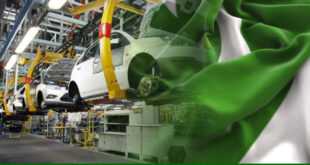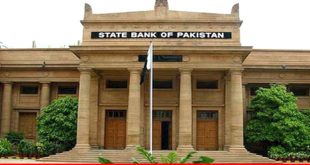Current benchmark interest rate at 7 percent is the lowest in 42 years in Pakistan. Last month, the central bank kept its policy rate unchanged at after lowering its rate by 100 bps to 7 percent as it was in May. The cut in interest rates would only benefit the economy if the initiative is to support the private sector, otherwise the government’s excessive borrowing from the banking system will continue to fuel inflation.
Present government led by Prime Minister Nawaz Sharif borrowed Rs1.4 trillion from scheduled banks in the last fiscal year 2014-15, while the private sector credit off-take fell by 44 percent over the preceding year, according to the State Bank of Pakistan (SBP). The private sector credit off-take shrank to Rs208.7 billion in 2014-15 from Rs371 billion in the previous year, despite low oil prices and 300 basis points cut in interest rate. Despite low inflation, the growth rate of monetary expansion was 13.23 percent (Rs1,319 billion) compared to 12.53 percent (Rs1,110 billion) in FY14, mainly on account of higher Net Domestic Assets of the banking system, which stood at Rs1,100 billion compared to Rs778 billion a year ago.
The government missed most of the budgetary targets in the last fiscal year while heavy borrowing hits the private sector. The country could not achieve the growth rate target, mainly because the private sector could not get support from the banking money despite recent drastic cuts in the interest rates. No doubt, the high interest rate has been responsible for sluggish economy, falling investments, growing job and export losses. But, keeping the private sector out of banking money eventually means to suppress economic growth. In the given situation, the cuts in interest rate cannot help salvage the local industry.
The government’s borrowing would have been highly inflationary in nature if it had borrowed from the central bank. It could not do so due to a condition set by the International Monetary Fund (IMF) under its loan package. It was in fact the significant increase in the government’s issuance of T-bills that led to a decline in government borrowing from the central bank during the last fiscal year. The federal government plans to borrow Rs1.35 trillion from banks through the sale of Market Treasury Bills (MTBs) and Pakistan Investment Bonds (PIBs) to finance its budget deficit during the first quarter of the current fiscal year 2015-16, according to the central bank. It actually shows that the government continues to rely on borrowing from banks to finance its spending despite the strong foreign inflows.
Continued debt trap
The central bank tightens its monetary stance due to less liquidity in the market created by the increased government’s borrowing. The government’s inability to control its increased borrowing for current expenditure may push the country into a prolonged spell of stagflation. The easy recourse to increase borrowings from the banking system leaves little incentive to the government to put its badly-needed fiscal situation in order. The excessive borrowing from scheduled banks causes an expansionist monetary growth increasing currency in circulation, which accelerates inflation making it difficult for the economic managers to control the fiscal deficit. The government’s persistent reliance on costlier domestic resources for financing its fiscal deficit may push the country into a debt trap. The tight monetary policy proved ineffective in weaning the government off State Bank funding.
There seems hardly any connection of inflation with the interest rate because high interest rate has been unable to control double-digit inflation in Pakistan. The country actually has cost-push inflation. It depends upon fuel prices. It goes up and down with the rise and fall of fuel prices. Realistically speaking, the government’s decision to cut or raise petroleum prices actually determines the change in the inflation rate. In the last fiscal year, falling crude prices succeeded to bring down the inflation to historic low of 4.5 percent on an average, but the private sector failed to benefit from it either. The government has been lowering oil rate in line with the international trend, but the prices of basic items continue to rise. The people are however hit hardest by soaring commodity prices. It is all about the bad governance that commodity prices could not be reduced despite reduction in transportation costs due to decrease in fuel prices.
Former government of Prime Minister Yousuf Raza Gilani increased discount rate by 200 bps to meet the IMF’s laid down conditions in 2008 when the country turned to the IMF for $11.2 billion loan to avert a balance of payment crisis. It is a fact that the double-digit interest rate has been unable to control double-digit inflation under Gilani administration.
Under IMF pressure, the country’s central bank pursued a tight monetary policy. High interest rate has been the key reason behind the low growth in the industrial production and in result many industrial units in the country have been closed.
Present government is also following the same approach and policy of the former government to deal with an economic mess. There is no out-of-box solution presented by the new economic managers to overcome the economic crisis. Like the previous government, Sharif government continues to print currency notes and borrow from banking system to meet its expenses raising concerns about the country’s macroeconomic stability. Critics say that a meager drop in discount rate will make no difference as the rate is still one of the highest in the world, hence it should have been reduced by three or four percent. The successful completion of structural benchmarks under the IMF program would only ensure additional financial inflows from other international finance institutions. Without IMF-dictated reforms, the burden of adjustment would fall disproportionately higher on interest and exchange rates.
The tight monetary policy and heavy government borrowings did not allow the private sector to play its key part as engine of growth. High borrowing costs discouraged the demand for private sector credit, which in turn decreased private investment adversely affecting the prospects of economic growth. Critics say that the country has witnessed merely a change of face at the top of political brass following 2013 general elections.
 PAGE Blog Business Weekly Magazine
PAGE Blog Business Weekly Magazine

